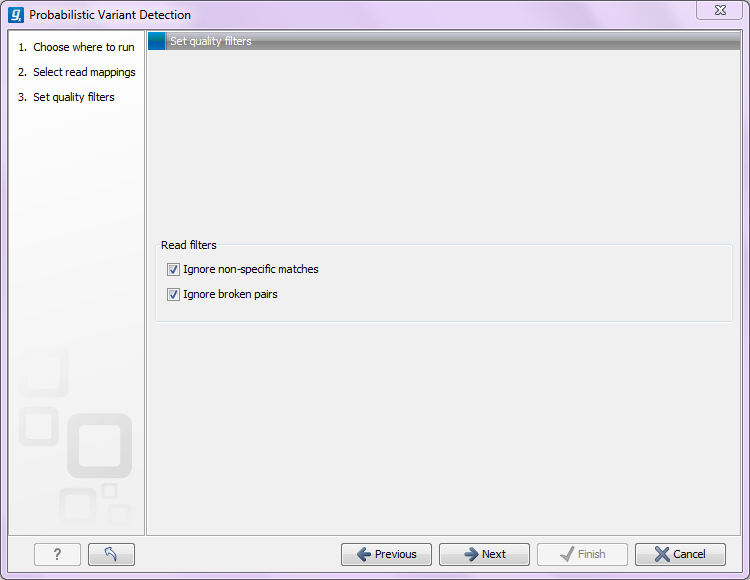Read filters
Clicking Next will display the dialog shown in figure 26.14.

Figure 26.14: Read filters for the variant detection.
In this dialog, you can specify reads to be filtered away before variant calling:
- Ignore non-specific matches
- This will ignore all reads that are marked as non-specific matches (see Non-specific matches). This is generally recommended, since there is no way of knowing whether the reads and thereby the variant are mapped to the correct position.
- Ignore broken pairs
- This will ignore all reads that come from broken pairs (see Mapping paired reads). We recommend to switch on the 'Ignore broken reads' filter in case data included paired-reads. As paired-reads have a larger overall alignment with the reference genome, the alignment is more trustworthy than an alignment with a single read, because the probability that the pair could map somewhere else is lower. However, variants in regions with larger deletions, insertions or rearrangements will be ignored, as broken pairs are often indicators for these kinds of events. Note that if you have mapped a combination of single and paired reads, the reads that were marked as single when running the mapping will still be part of the variant detection, even if you have chosen to ignore broken pairs.
Please note that all the filtering described here means that sometime there is a difference between the coverage of the mapping and the actual counts reported for a variant. The difference would be the number of reads that have been filtered before variant calling.
